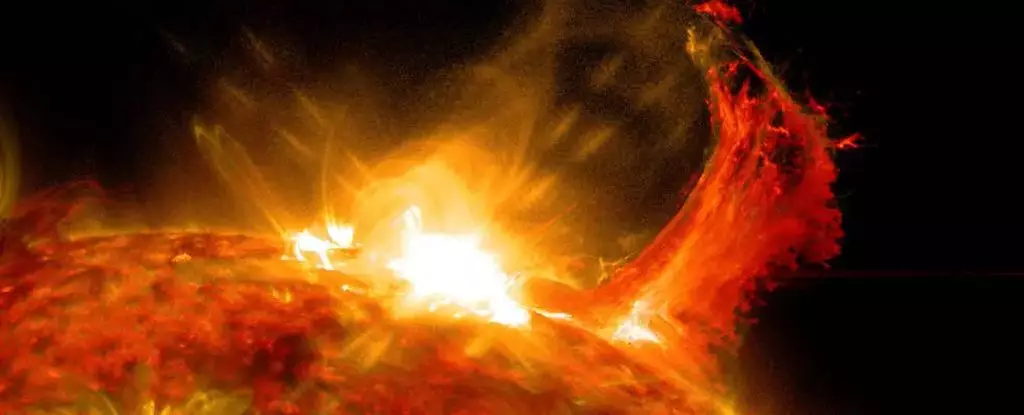At first glance, the Sun appears to be a steadfast beacon in the cosmos, a bright source of light that imbues our planet with warmth and vitality. Yet beneath this surface lies a tumultuous sphere of plasma and high-energy gases constantly influenced by powerful magnetic forces. This intricate dynamism makes solar activity, particularly features like coronal mass ejections (CMEs), unpredictable. Solar physicists grapple with this variability, acknowledging how it affects our technological systems on Earth.
CMEs serve as one of the most dramatic manifestations of solar behavior. These massive expulsions of solar material can have profound effects on Earth’s magnetosphere, leading to issues like satellite disruptions and GPS malfunctions. Furthermore, these energetic phenomena can create beautiful displays of auroras. Given the potential risks associated with CMEs—including power outages and communication disruptions—the need for accurate forecasting of solar events has never been more pressing.
To mitigate the unpredictability of solar events, researchers are increasingly turning to advanced technologies, specifically artificial intelligence (AI). A notable study conducted by a team of astronomers, led by Sabrina Guastavino of the University of Genoa, explored the efficacy of machine learning algorithms in forecasting solar activity. The central premise of the research focused on using AI to analyze vast datasets accumulated over decades of solar observations. The team specifically investigated a significant solar event from May 2024, aiming to harness AI’s pattern recognition capabilities to predict various related activities, such as solar flares and CMEs.
In this study, the researchers demonstrated that machine learning models could detect the subtle indicators of solar flares emanating from a particular sunspot region designated AR13664. This marked a pivotal movement towards more reliable forecasting methods that differ considerably from traditional approaches. For instance, conventional models might struggle to parse the extensive datasets quickly and efficiently; however, AI can sift through extensive amounts of solar activity data to unearth intricate interrelations that remain undetected by human analysts.
The results of Guastavino’s team were promising. Their predictions related to the May 2024 storm and the solar flare rated as X8.7 showcased unprecedented accuracy compared to historical forecasting methods. The machine learning algorithms demonstrated a significant reduction in uncertainty, informing researchers about not just the occurrence of events but also the dynamics surrounding them, including the timing of CMEs’ travel to Earth and the onset of corresponding geomagnetic storms.
Such advancements in solar forecasting are more than an academic exercise; they carry real-world implications. Accurate predictions could mean the difference between preparedness and calamity in terms of technology reliance. Given that modern society’s infrastructure is intricately connected to satellite networks and electrical grids, understanding the potential impacts of solar storms is crucial to safeguarding these systems.
The profound implications of this research reach far beyond academic curiosity. The ability to anticipate solar events more accurately could lead to enhanced resilience against the disruptive effects of CMEs. Operational protocols could be refined in sectors such as telecommunications, aviation, and power distribution, while also offering improved data for scientists studying geomagnetic phenomena.
Furthermore, understanding solar flares and CMEs can significantly enhance the experiences of sky gazers and aurora enthusiasts, providing them with timely updates to catch breathtaking light displays, which are visible thanks to the interaction between solar particles and Earth’s atmosphere.
As we continue to delve into the complexities of the Sun’s behavior, the collaboration between solar physics and artificial intelligence appears indispensable. The continuous refinement of AI technologies promises to pave the way for more sophisticated forecasting methods capable of keeping pace with the Sun’s unpredictable character. The integration of these advanced tools into solar research signifies a transformative chapter, potentially allowing humanity to better navigate the celestial phenomena that impact our planet and its technology.
While the Sun might seem constant, its inherent volatility challenges our understanding. However, the application of machine learning in solar phenomena forecasts heralds a new era of possibility, where we may harness technology for increased understanding and readiness against the forces of nature.


Leave a Reply